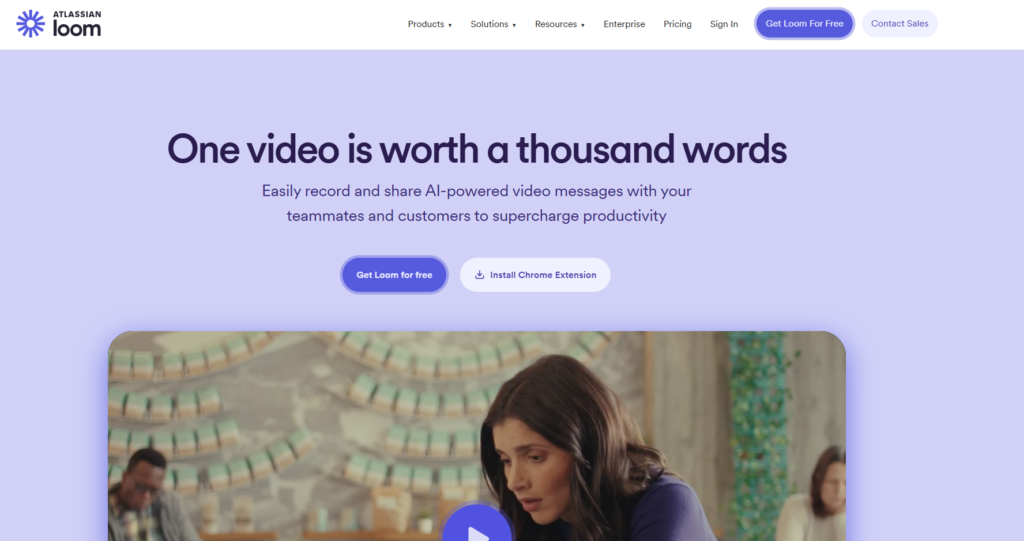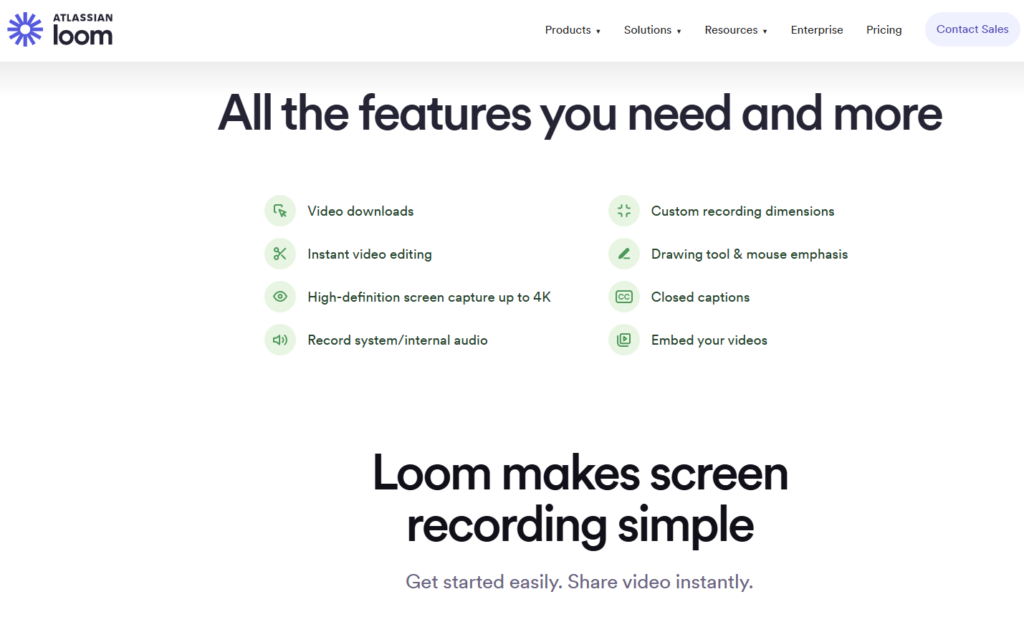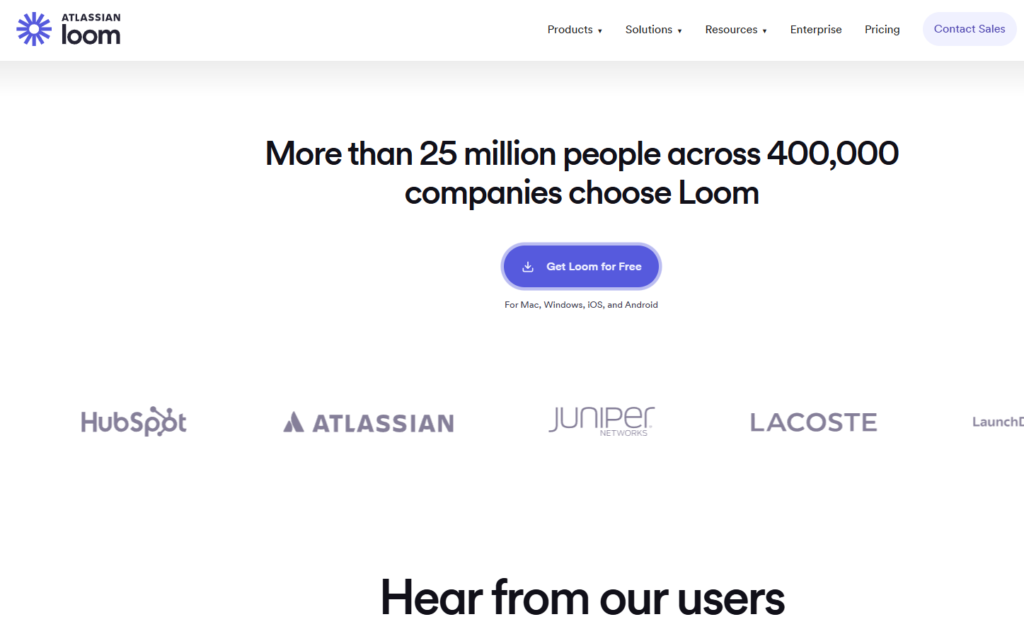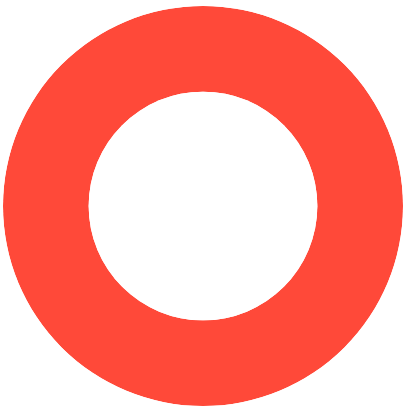What does it take to turn a simple video tool into a billion-dollar business? Shahad Khan, founder of Loom, has the answer.
Launched in 2016 with two co-founders, Loom quickly became the go-to tool for asynchronous video messaging, helping remote teams connect without the hassle of meetings. And in October 2023, Loom hit a major milestone: a $975 million acquisition by Atlassian.
But how did they do it? Shahad and his team didn’t just create a product—they built a movement.
With a freemium model and a smart user experience, Loom attracted 1.2 million users across 21,000 companies before even introducing a paywall.
Then, almost overnight, they hit a million dollars in revenue by offering premium features for just $10 a month.
In this article, we’ll explore how Shahad’s team achieved this explosive growth. From their “viral loop” tactics to engineering experiments, every step of Loom’s journey offers lessons for founders aiming to build a strong, sustainable user base.
For a deeper dive into insights like these, explore our latest article here: Content that Converts: Hootsuite CEO’s Insights on Growing Revenue with Gen Z Buyers.
1. Understanding the Power of Virality: Loom’s User-Driven Growth
In the early days, Loom didn’t rely on massive ad campaigns. Instead, they focused on making their product inherently shareable.
Shahad knew that every time someone used Loom, they created something valuable—a video that could be shared. And every time a Loom video was shared, it introduced the product to a new potential user.
To enhance this viral effect, Loom encouraged users to invite others to respond directly within the app. Watching a Loom video could trigger a prompt to sign up, reply, or create another Loom.
This naturally built a network effect, where users became ambassadors simply by using the product.

Key Takeaway: Make your product shareable and let your users do the marketing for you. A strong viral loop is often more powerful than any ad budget.
2. Launching the Paywall at Just the Right Time
Timing the shift from free to paid is critical, and Shahad knew he had to wait until Loom had traction. For the first three years, Loom focused exclusively on growing its user base and refining the product.
They introduced the “Loom Pro” premium plan only after they’d built an audience of 1.2 million users who were deeply engaged with the platform.
The Pro plan included features like enhanced analytics and call-to-action buttons—tools that allowed businesses to get more value from their Loom videos.
Shahad’s decision to launch the paywall at $10/month wasn’t arbitrary. This price point was accessible for individuals and businesses alike, ensuring Loom didn’t lose the broad user base it had cultivated.
Key Takeaway: Scale first, monetize later. With a solid base, you can introduce a paid plan that feels like a natural upgrade, not a barrier.
3. Experimenting Relentlessly to Fine-Tune User Experience
To keep growing, Loom’s team experimented weekly. They tested various product tweaks, from layout changes to prompt timings, to see what encouraged users to record and share more videos.
One particularly successful experiment? Integrating Loom with Gmail. This integration made it easy for users to switch from text to video when drafting an email, adding convenience and visibility for Loom.
By keeping a lean, focused growth team with a dedicated “growth engineer,” Loom could rapidly test ideas, keeping the best and discarding the rest.
This commitment to continuous experimentation allowed them to stay agile and responsive to user feedback.

Key Takeaway: Consistent, small experiments lead to big wins. A/B testing and rapid iterations allow you to stay responsive and improve user engagement in real time.
4. Building and Nurturing a Remote-First Team
While the Loom product itself was designed for remote work, the Loom team took it a step further, becoming a fully remote-first company.
This allowed Loom to attract talent from all over, not just the expensive hubs like San Francisco. By hiring globally, they saved on costs, accessed diverse talent, and built a culture that reflected their product’s values.
Shahad also focused on creating a team that didn’t just work remotely but thrived remotely. Asynchronous communication was part of the DNA at Loom, so the team leveraged their own product daily.
This approach helped them understand the nuances of remote communication firsthand and improve the product experience for their users.
Key Takeaway: When your product and company culture align, it creates a powerful synergy. A team that uses the product they’re building can gain insights that fuel genuine improvement.
5. Preparing for the Acquisition: Loom’s Path to $975 Million
Selling Loom to Atlassian was a strategic decision, but it didn’t happen overnight. The groundwork was laid years before, with decisions that made Loom attractive to potential buyers.
They’d built a sustainable growth model, strong user base, and scalable infrastructure—all crucial to appealing to a company like Atlassian.
What made Loom even more attractive was its product-market fit and its established reputation in the workplace productivity space.
By the time they reached acquisition discussions, Loom was not just a product; it was a brand synonymous with video messaging.
This reputation, combined with a loyal user base and scalable product, made Loom an ideal acquisition target.

Key Takeaway: Focus on building a product that creates value and scales well. When the fundamentals are strong, acquisitions happen naturally.
Before We Go
Shahad Khan’s journey with Loom offers a blueprint for modern product growth. From leveraging virality to building a team that uses the product daily, every step in Loom’s path was about understanding users and delivering value.
Asynchronous video messaging may seem like a niche tool, but Loom’s story shows that any product, with the right strategy and timing, can become a billion-dollar success.
For founders and marketers alike, the lessons from Loom are clear: nurture organic growth, experiment consistently, and focus on the fundamentals.
In today’s startup landscape, smart growth isn’t just about adding users—it’s about building something users love.
At Concurate, we’re passionate about crafting high-quality, deeply researched content that resonates with your target audience and drives real results.
Just as Loom built a loyal user base through organic growth and strategic insights, we help businesses create content that attracts, engages, and converts.
If you’re ready to elevate your content strategy and reach the right audience on Google and beyond, let’s talk.
We’ll work with you to build a content plan that’s as unique as your brand.
Disclaimer: This article is based on insights from Shahad Khan’s conversation with Nathan Latka on Nathan Latka’s YouTube channel.







